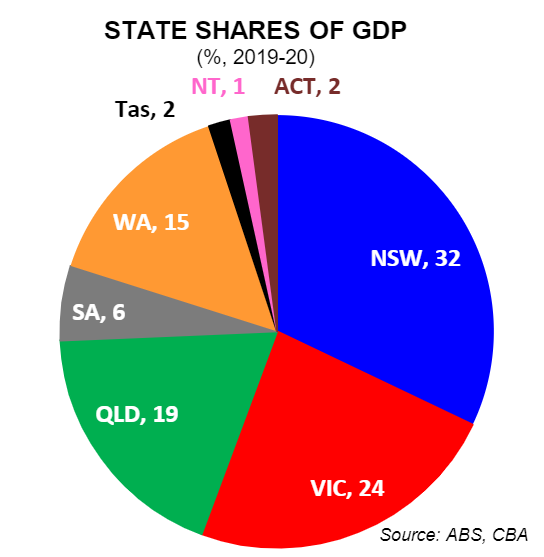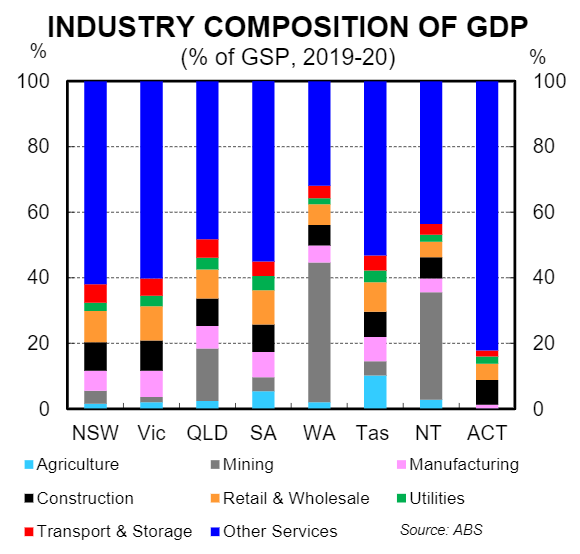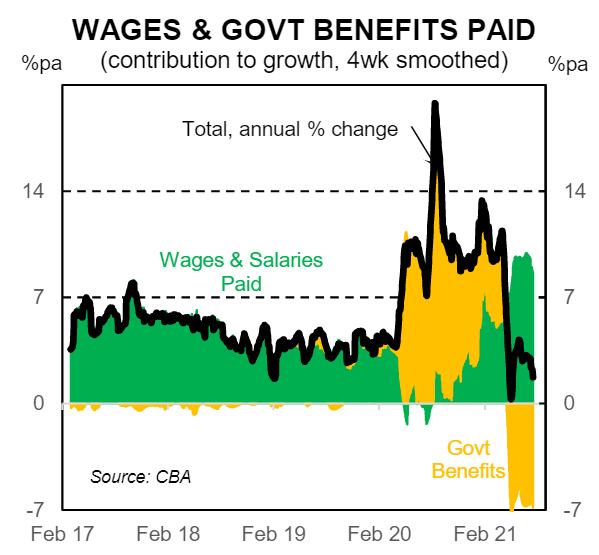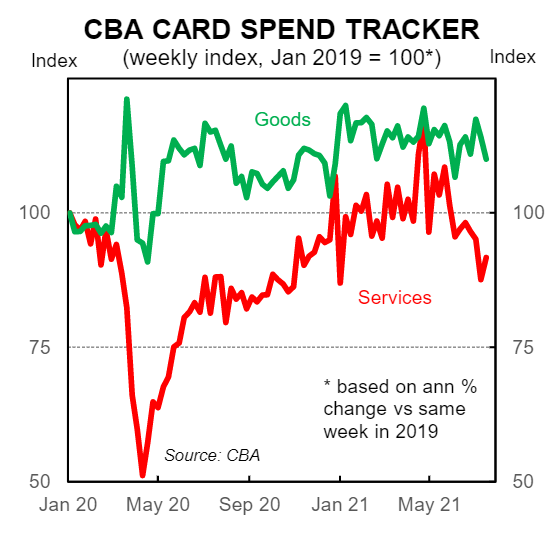By Gareth Aird, head of Australian economics at CBA
- The level of uncertainty over economic outcomes in the near term has further increased over the past week because of additional lockdowns around the country, lockdown extensions and a tightening of restrictions in Greater Sydney.
- The absence of any downward trend in the number of daily new COVID-19 cases active in the community in Greater Sydney means it is not yet possible to forecast an end date to the lockdown.
- Income support to businesses and workers negatively impacted by the lockdowns remains critical to ensuring a strong economic rebound once restrictions are eased.
Last week we published some preliminary thoughts on the economic impact of the Greater Sydney lockdown (see here). To illustrate the impact of the lockdown on the economy we ran a simply scenario to say that a ~7 week lockdown in its present form would subtract a large 1.4% from Q3 21 GDP (note that only four days of the lockdown were in Q2 21). Such an outcome on our figuring would see the national economy contract over the September quarter (by around 0.7%).
We stated that nobody could determine when the lockdown would end because the daily number of new COVID‑19 cases had trended up since the lockdown started. And we also noted that there was a risk that restrictions would be further tightened.
Since we published that piece three important things have happened:
- the daily number of new COVID‑19 cases active in the community has continued to trend up;
- restrictions have been further tightened in Greater Sydney (non‑essential retail is required to close and all construction has been paused ‑ which doubles the cost of the lockdown each week); and
- Victoria and SA have entered ‘snap’ lockdowns (Victoria went into a 5‑day lockdown on 15 July which has since been extended a week to 27 July and SA went into a 7‑day lockdown on 20 July).
These developments mean that the hit to Q3 21 GDP will be a lot larger than the 1.4% we flagged last week (i.e Q3 21 GDP will contract by a lot more than 0.7%). But more importantly the developments are concerning because things have not moved in the desired direction on the COVID‑19 front, particularly in NSW.


Policymakers have stated that the objective behind the lockdowns is to drive daily new COVID‑19 cases which are active in the community to zero. Once that objective has been achieved major restrictions can be lifted (particularly the initial restrictions imposed in the first three weeks of the lockdown in Greater Sydney).
The lockdown in Greater Sydney has clearly significantly halted the growth in new COVID‑19 cases. But given the daily number of new COVID‑19 cases active in the community has not yet come down it is not possible to forecast when the lockdown will end. Put another way, we need to see the daily number of new COVID‑19 cases active in the economy trend down before we can make an assessment of when the lockdown is likely to end.
Until that happens or if the objective shifts, we cannot discount the scenario where the lockdown continues indefinitely until the proportion of the population vaccinated hits a level that policymakers deem acceptable to reopen the economy.
In a week’s time we will have a much better gauge as to whether or not the stricter lockdown will push the daily number of new COVID‑19 cases down in a way that means we can project the end date of the lockdown. If not, we are likely to be facing a central scenario for the economy that sees the current lockdown in Greater Sydney as a permanent feature until a yet‑to‑be‑determined vaccine threshold has been reached.
In the meantime income support to businesses and workers remains critical to ensure that the economy has the best chance to rebound very quickly when restrictions are eased.

We do not yet have the information to be able to determine what sort of shock we are looking at to income over Q3 21 (recall that household income stepped up in 2020 because fiscal payments were so large). As such we will once again look to our internal data to guide us as to what is happening on the income side and that information will be regularly published to our readers over the next few months.


